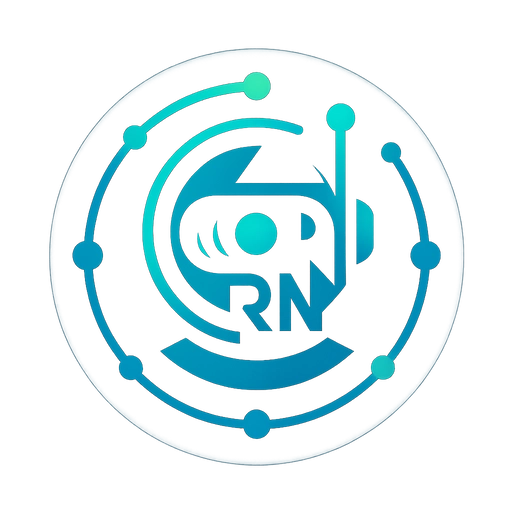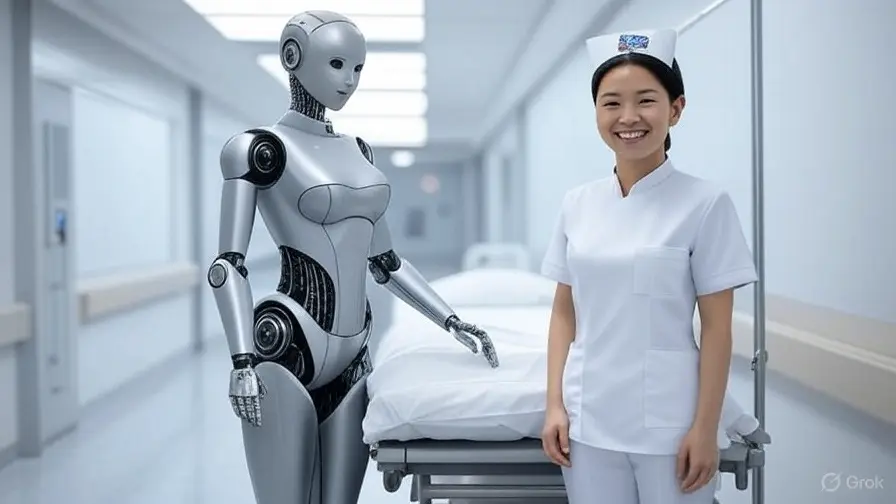Table of Contents
Introduction: The Big Question in Modern Healthcare
Will robots replace nurses? That question has hovered over healthcare conferences, ethics panels, and hospital boardrooms for over a decade. The rapid rise of artificial intelligence and humanoid robotics has turned what once felt like science fiction into a plausible scenario. In a few hospitals in Japan and South Korea, robot nurses already help lift patients, deliver medication, and disinfect rooms.
Yet the heart of nursing is not merely efficiency or endurance. It’s empathy, judgment, and the capacity to care. So, as AI grows sharper and robots become more capable, are we truly nearing a future where robot nurses replace human nurses, or are we simply witnessing the birth of powerful assistants designed to reduce human workload?
Most researchers, engineers, and clinicians agree on one thing robots will not replace nurses, but they will change nursing forever. They’ll automate physical strain, streamline documentation, and expand care coverage, especially during global nursing shortages. But the human connection the “caring intelligence” remains uniquely ours.
The Irreplaceable Human Element in Nursing
Comparing Robot and Human Nurses: Roles, Strengths, and the Future of Healthcare
With the rise of artificial intelligence and robotics, the healthcare industry is beginning to see how machines can support not substitute human caregivers. Robot nurses are increasingly being introduced into hospitals and clinics to handle certain duties, but they remain far from replacing the unique qualities that human nurses bring to patient care.
What Human Nurses Bring to the Table
Human nurses offer something no machine can replicate: emotional intelligence. Their ability to connect with patients on a personal level, show empathy, and provide comfort plays a crucial role in healing. These professionals are trained to assess complex situations, make quick decisions, and adapt to unexpected challenges. Their experience allows them to notice subtle changes in a patient’s condition and respond accordingly something that requires intuition and critical thinking, not just data.
Will Robots Replace Nurses?
Moreover, human nurses provide a personal touch that is especially important in sensitive or emotionally charged situations. Whether it’s holding a patient’s hand, offering reassurance, or simply listening, these moments of human interaction are irreplaceable.
The Role of Robot Nurses
On the other hand, robotic systems are proving valuable in handling repetitive and physically demanding tasks. They can deliver medications, transport supplies, and monitor vital signs with consistent accuracy. These functions may seem basic, but they help reduce the workload on human staff, allowing nurses to focus more on direct patient care.
Robots are also useful in maintaining precision and reducing human error in routine procedures. Equipped with sensors and AI, they can collect and analyze data efficiently, offering real-time insights that support clinical decision-making.
Working Together: A Complementary Approach
Rather than viewing robots as competitors, the future of nursing lies in collaboration. Machines can take over time-consuming or labor-intensive duties, while human nurses continue to provide the emotional support, critical thinking, and adaptability that define quality care.
As technology evolves, nurses will need to become more tech-savvy, learning how to work alongside robotic systems effectively. This integration promises a more efficient healthcare environment one where human compassion and machine precision work hand in hand.
Can AI Replace a Nurse’s Empathetic Touch?
The human body can be scanned, measured, and monitored. But the human experience fear, hope, pain, and dignity is harder to quantify. Empathy is not an algorithmic process. It’s built from shared vulnerability and a sense of moral responsibility.
When a nurse comforts a frightened patient before surgery or reads subtle emotional cues in an elderly patient’s eyes, that’s not just procedural care. It’s relational intelligence. No robot nurse in hospital today, no matter how advanced, can replicate that.
AI can predict risk scores or optimize medication schedules, but it cannot understand why a patient hesitates to take medication or how to encourage compliance with compassion. This gap between understanding and empathy defines the limits of AI in nursing.
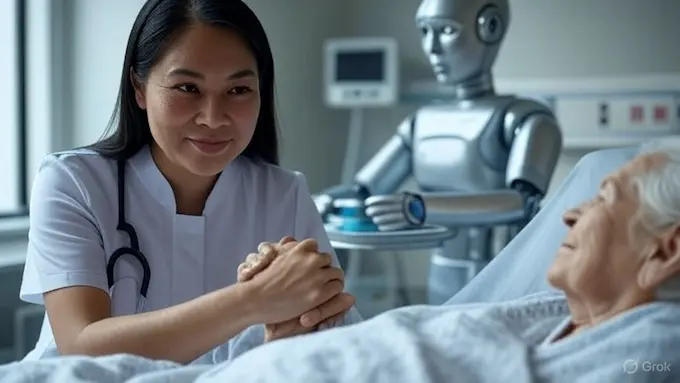
Clinical Judgment — The Human Brain as a Diagnostic Engine
The other irreplaceable strength of human nurses lies in judgment under uncertainty. Medical diagnostics rarely offer clean data. Symptoms overlap. Machines produce false positives. Nurses, especially experienced ones, often make life-saving calls based on intuition honed by years of pattern recognition the kind no neural network truly mimics.
Consider an ICU nurse noticing that a patient “just doesn’t look right.” It’s not an algorithmic rule, but a deep human inference based on dozens of micro-signals skin tone, breathing rhythm, facial tension.
Even with advances in AI in nursing, human judgment is the adaptive glue of healthcare. Robots can assist by flagging anomalies or analyzing vitals, but nurses decide what those signals mean in human context.
The Rise of the Robot Nurse in Hospitals
In 2015, Japan introduced RIBA II a robotic nurse designed to lift patients from beds and wheelchairs. It had padded arms, gentle voice feedback, and precise motion control to avoid injury. It wasn’t replacing nurses; it was protecting them. Back injuries are one of the top causes of nursing attrition worldwide.
Modern hospitals use robots to carry linens, deliver meals, or disinfect rooms with ultraviolet light. AI systems transcribe medical notes and schedule staff shifts. The ecosystem is quietly transforming nursing from within. These robot nurses are extensions of care, not competitors. Their presence means nurses can spend more time in direct interaction with patients the core of what defines nursing as a profession
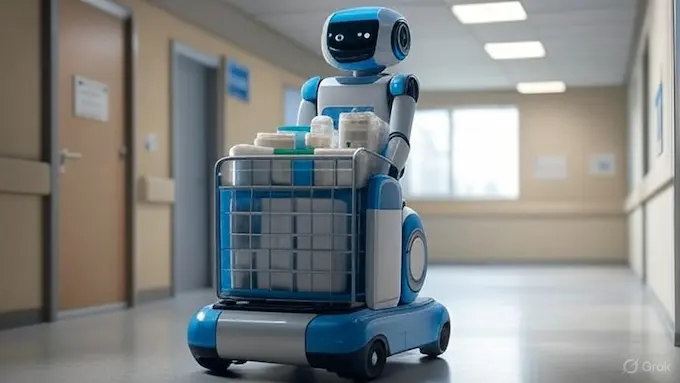
What Tasks Can Robots Perform to Assist Human Nurses?
The new generation of healthcare robots specializes in precision, endurance, and data handling. Here’s how they already contribute
Physical Assistance
Robots like RIBA and Toyota’s HSR can lift patients, transfer them between beds, or move equipment weighing over 150 kilograms. They handle repetitive physical labor with tireless accuracy an enormous relief for staff facing shortages.
Data and Monitoring
AI-equipped robots continuously record vitals, track medication adherence, and alert nurses about irregularities. In aging populations, these functions reduce human workload without compromising safety.
Disinfection and Delivery
Autonomous UV robots disinfect rooms within minutes. Delivery robots navigate hospital corridors to transport blood samples or medications securely, maintaining chain-of-custody standards
Documentation
AI transcription tools capture nurses’ spoken reports and update electronic health records automatically, minimizing paperwork fatigue a chronic burden in modern healthcare.
The takeaway is simple Will robots replace nurses? Not likely. They’ll handle the mechanical and administrative tasks so nurses can focus on human connection and advanced clinical care.
Robot Nurse Advantages and Disadvantages
Advantages
- Consistency and Endurance: Robots never tire, ensuring steady performance during long shifts.
- Reduced Physical Strain: Automated lifting and transport prevent staff injuries.
- Infection Control: Robots limit exposure during outbreaks such as COVID-19.
- Data Accuracy: AI reduces documentation errors and enables real-time analytics.
- Resource Optimization: Automated logistics lower operational costs over time.
Disadvantages
- Lack of Emotional Understanding: Robots can’t replicate empathy or moral reasoning.
- High Implementation Cost: Advanced humanoid systems require heavy investment.
- Dependence on Data Integrity: A wrong sensor reading can trigger wrong decisions.
- Ethical and Legal Ambiguities: If a robot nurse makes an error, who is liable the manufacturer, the hospital, or the supervising nurse?
- Job Role Anxiety: The presence of automation can create fear among staff even when the goal is assistance.
These trade-offs define the core tension in discussions about robot nurses vs human nurses. Efficiency gains are tangible, but moral and emotional intelligence remain non-programmable.
How AI in Nursing Is Changing the Profession
Nursing is evolving into a partnership between human expertise and computational precision. AI in nursing now supports diagnostics, workflow optimization, and predictive modeling. Machine learning systems analyze patient data to flag sepsis risk hours before symptoms appear.
The next frontier is contextual intelligence systems that interpret not only physical data but environmental and behavioral cues. Imagine a hospital AI that correlates patient mood changes with medication timing or visitor frequency. These insights can guide human nurses to adjust care dynamically.
But AI still lacks the grounding of lived human experience. Nurses don’t just collect data; they interpret suffering. That interpretive act involves moral values, compassion, and social awareness dimensions outside computational reach.
The Ethics of Robot Nurses
Responsibility and Trust
Ethical questions are multiplying. If a robot nurse in hospital misidentifies a patient or delivers medication incorrectly, who bears responsibility? Surveys in Japan show that most professionals still hold the supervising nurse accountable. The robot, after all, lacks moral agency. Trust, too, becomes fragile. Patients may comply with instructions from human nurses but hesitate with robotic ones, even if the robot’s logic is flawless. Nursing is not merely the transmission of orders it’s a relationship built on trust and reassurance
Can Robots Ever Be Moral Agents?
Philosophically, this question touches on the core of human uniqueness. A robot may simulate concern, but it cannot feel it. It can apologize, but not mean it. In ethics, intention matters as much as outcome. Until AI develops consciousness a prospect still theoretical robot nurses will remain moral instruments, not agents.
This distinction defines the moral architecture of modern healthcare robotics. Will robots replace nurses in the moral sense? Never. They can only complement them within the framework of human accountability.
How Robot Nurses Help with the Nursing Shortage
The World Health Organization predicts a global shortage of 10 million healthcare workers by 2030. Aging populations and pandemic aftershocks have intensified the crisis.
Robot nurses can ease this burden by covering repetitive and time-intensive tasks. During night shifts, autonomous units handle logistics, allowing fewer human nurses to monitor more patients effectively. In elderly care facilities, companion robots engage residents through reminders, conversations, and mobility assistance.
In this sense, AI in nursing acts not as a threat but as a survival tool for healthcare systems under pressure. Hospitals that deploy assistive robotics report measurable reductions in nurse burnout and turnover clear proof that augmentation, not replacement, is the real story.
Are Current Robot Nurses Fully Autonomous or Just Assistants?
Despite sensational headlines, today’s robot nurse in hospital functions are largely assistive, not autonomous. Even advanced humanoids like Grace or RIBA operate under human supervision. They rely on structured environments and pre-defined responses.
Fully autonomous nursing where robots make independent clinical decisions remains a distant goal. The unpredictability of patient behavior, variable hospital settings, and ethical complexity make full autonomy risky and legally untenable.
The near future will likely see hybrid teams: nurses directing intelligent robots through voice commands or wearable interfaces. Robots will learn from nurses’ behavior through reinforcement learning but remain subordinates, not replacements.
The Future of Caring — Merging Humanity with Technology
The future of nursing isn’t a battle between human and machine. It’s a convergence. As AI in nursing matures, nurses will need new literacies data interpretation, system oversight, and human-robot collaboration.
Researchers call this the “technological competency as caring” framework: using technology not to dehumanize, but to enhance our capacity to know and support patients as whole persons. In this model, empathy and analytics are not opposites they’re partners.
The question “Will robots replace nurses?” then transforms into something more profound: How can robots help humans become better caregivers?
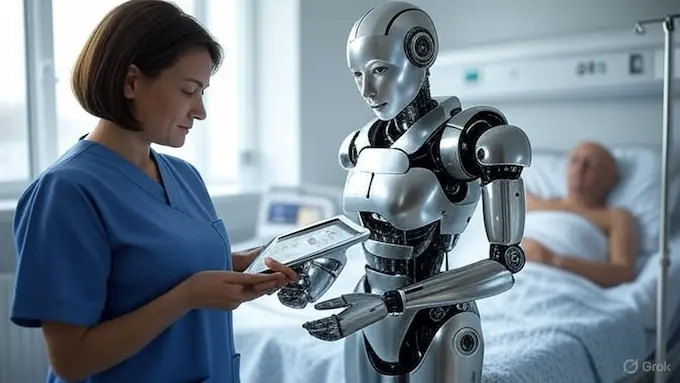
Preparing for the Technological Era of Nursing
As robotics and AI expand, nursing education must evolve. Future curricula will combine traditional anatomy and ethics with machine learning literacy, robotic interface design, and human-computer interaction.
Hospitals will need interdisciplinary teams robotic engineers working with clinical staff to design usable, safe, and compassionate systems. Regulation will follow: safety standards, liability frameworks, and ethical guidelines defining the boundaries of AI in nursing.
At the policy level, embracing robotics can make healthcare more resilient against crises. Robots can sustain care continuity during pandemics or natural disasters, minimizing exposure risk while keeping hospitals operational.
Beyond Replacement — The Philosophy of Human Care
At its essence, nursing is not defined by the tools used, but by the intent behind them. From stethoscopes to infusion pumps, every medical innovation once stirred fear of obsolescence. Yet nurses adapted, integrating each tool into their practice without losing their humanity.
Humanoid nurse robots are simply the next instrument in that lineage. They challenge us to rethink what “care” means not to diminish it, but to extend it into new forms.
Will robots replace nurses? Not if we keep redefining nursing as both a science and an art, where technology serves empathy rather than erases it.
FAQs — Understanding the Future of Robot Nurses
Final Thoughts on Will Robots Replace Nurses
As hospitals evolve into data-driven ecosystems, the nurse’s role as the emotional and ethical anchor of healthcare becomes even more vital. Machines may handle the precision work, but meaning the “why” behind every act of care remains human territory.
The answer to Will robots replace nurses? is clear: they’ll stand beside them, not instead of them. Nursing will thrive at the intersection of compassion and computation, where technology amplifies what makes care truly human.
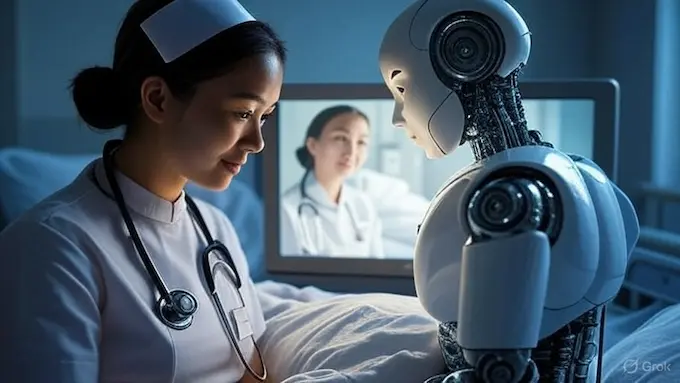
Q1. Can AI replace a nurse’s empathetic touch?
No. Empathy in nursing is not a script or a set of gestures, it is a moment-to-moment reading of a person’s feelings, history, culture, and fears, then responding with judgment and care. Current AI can detect sentiment, mirror tone, and trigger a soothing phrase, yet it does not actually understand suffering or context the way a trained nurse does. Bedside care often involves ambiguity, family dynamics, and ethical tradeoffs that require reflective listening and moral courage. Technology can help, for example by translating languages, summarizing charts, and flagging risks, which gives nurses more time for human contact. It cannot replace the genuine presence that calms a patient at 3 a.m. The smart way forward is to pair clinical intuition with data support and to measure outcomes like comfort, adherence, and trust, not just throughput. People often ask, Will robots replace nurses, but the evidence from hospitals is clear that the best results come from empowered nurses using good tools.
Q2. How are robot nurses helping with the nursing shortage?
By handling physical and logistical tasks, robots free nurses for higher-value patient interaction, reducing burnout and improving care quality
Q3. What tasks can robots perform to assist human nurses?
They lift patients, deliver supplies, document care, monitor vitals, and disinfect rooms — all repetitive or physically demanding duties.
Q4. Will AI in nursing lead to job loss or a change in roles?
More likely a role shift. Nurses will become coordinators and interpreters of intelligent systems, not casualties of automation.
Q5. Are current robot nurses fully autonomous or assistants?
They are assistants. True autonomy requires reasoning, adaptability, and moral judgment that current AI cannot achieve.
